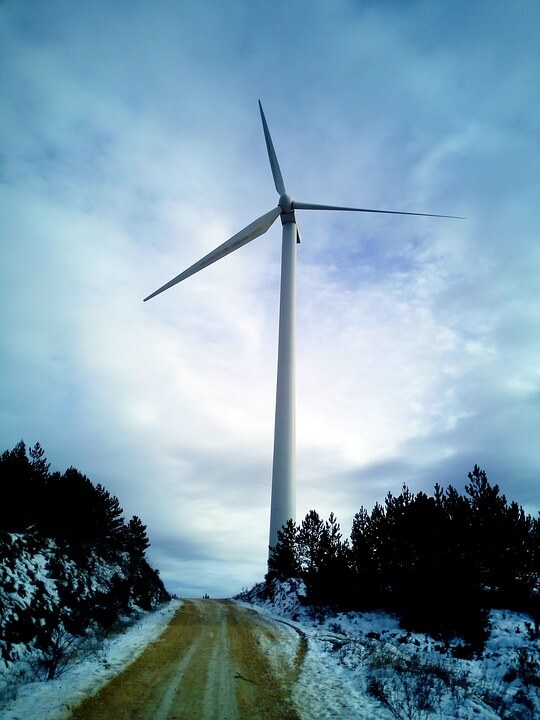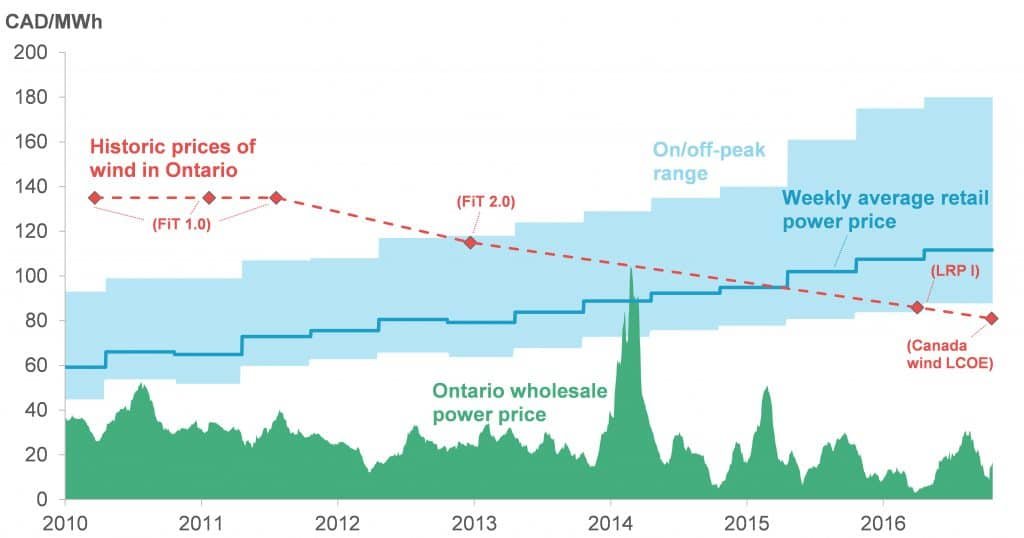
Wind costs are forecast to decline in Ontario, while costs for other forms of new or refurbished generation are increasing.
Important considerations for the future of Ontario’s electricity supply — such as affordability, protection of the environment, and power system reliability — are key themes addressed in the Canadian Wind Energy Association’s (CanWEA) submission to the province’s Long-Term Energy Plan.
“More wind energy capacity has been installed in Canada over the last decade than any other form of electricity generation,” said Robert Hornung, President, CanWEA. “In that time, Ontario has become Canada’s wind energy leader and Ontarians will be best served in the future by a Long-Term Energy Plan that builds on this foundation and increases Ontario’s reliance on its vast untapped low-cost and emissions-free wind energy resources to meet both economic and environmental objectives.”
New wind energy is now being contracted for as low as 6.45 cents per kilowatt hour in Ontario, well below the average cost for electricity generation of 11.14 cents as of May 1, 2016. Wind costs are forecast to continue declining while costs for other forms of new or refurbished generation are increasing.
As a low-cost, emissions-free source of electricity generation, wind energy will be essential if the province is to reduce its greenhouse gas emissions by 80% in 2050 as clean electricity will be needed to substitute for fossil fuels in transportation, industries, and buildings.
Wind energy can also play a major role in protecting Ontario’s supply reliability, helping to mitigate potential risks associated with nuclear life extensions and refurbishments, natural gas commodity and carbon costs, and shortfalls in achieving conservation and demand management goals.

This graph from Bloomberg New Energy Finance shows Ontario’s 24-hour wholesale power prices, historic wind contract prices, and current levelized cost of electricity, and residential rates. As the average cost of electricity generation in Ontario trends upwards, the cost of new wind energy is trending downward. (Source: CanWEA | BNEF)
To maximize these benefits for Ontario customers, all new generation needed in the coming years should be procured competitively to secure the lowest-cost non-emitting electricity generation, as this provides the best value for consumers.
“Wind energy is well positioned to help Ontario achieve its Climate Change Action Plan goals, to increase the affordability of electricity generation in Ontario, and to protect supply reliability at a time when there are growing risks to future electricity supply on the horizon,” said Brandy Giannetta, Ontario Regional Policy Director, CanWEA. “At the same time, the wind energy industry will continue to be a source of clean-tech jobs, investment, and community benefits throughout Ontario.”
Filed Under: News, Policy, Projects




